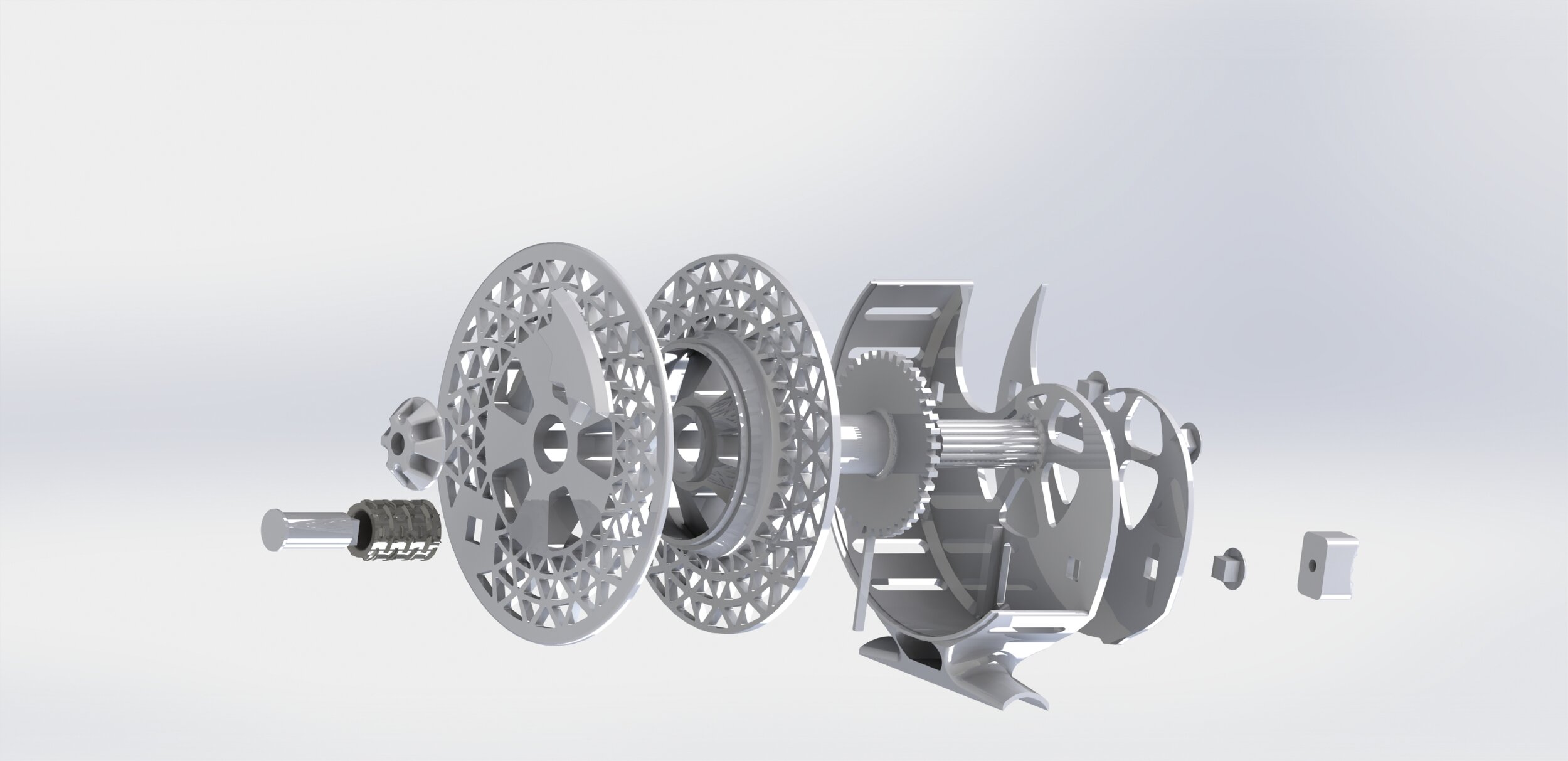“Quickshot” 95% Additive Fly Reel.
More of a passion project than anything else, but something I am proud of. I am a huge proponent of combining any 3D modeling with 3D printing. It really grounds you as an engineer and product designer, because you can see just how hard it is to conceptualize something in the 2D space, and how it translates into a user experience almost instantaneously.
Goals: 1) Design a 3D printable fly reel with an adjustable drag.
2) Minimal reliance on off the shelf hardware.
3) Aesthetic.
The first fish caught on my 3D printed reel! Awesome. 18 in brown trout during early spring in Cheesman Canyon. C Battery on fly rod used as counterbalance.
Design Discussion and Renders
In all honesty, I wanted something that looked weird. A passion project dreamed up over the course of weeks and clobbered together after a couple long nights; overly complicated and basic at the same time. I took some design inspiration from the current fly reel market: Airy designs, lots of holes, a clock-work like appearance that only aficionados would care to comment on.
A major design and engineering consideration was that I didn’t want to buy any more hardware than I already had. No bearing, seals, o-rings, or spacers were used in the final design. Only 2 M3 screws and nuts, and a single nylon 2mm zip tie.
Something entirely unique to my fly reel is the method of creating a quick adjustable drag system, while still being a click-pawl type reel. The “quickshot" knob seen on the back face controls the effective length of the nylon clicker, allowing for a maximum drag of approximately 2lbs.






